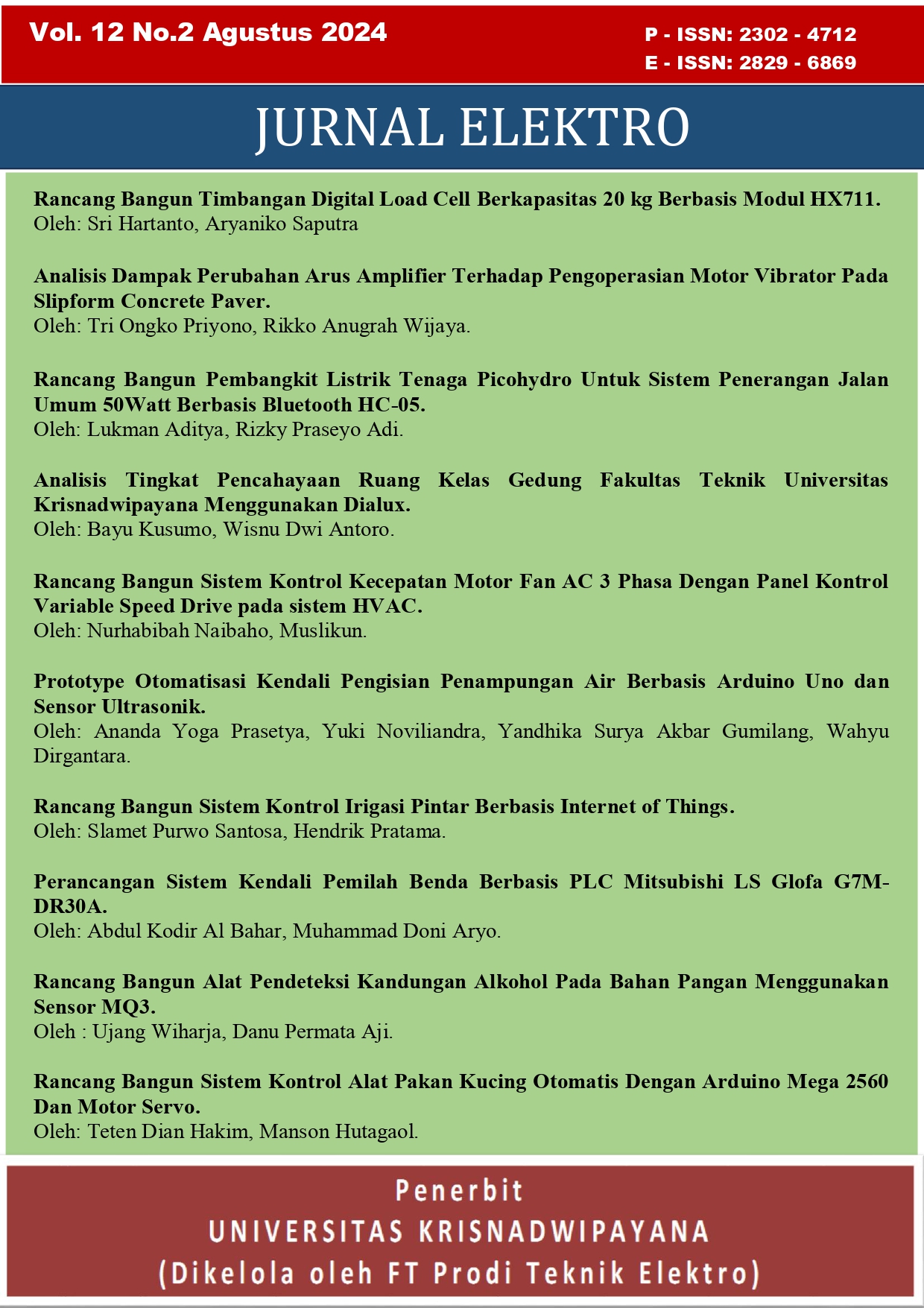Perancangan Sistem Kendali Pemilah Benda Berbasis PLC Mitsubishi LS Glofa G7M-DR30A
DOI:
https://doi.org/10.61488/jetro.v12i2.567Kata Kunci:
Servo Motor, PLC, proximity Sensor, SG90, RegulatorAbstrak
In its working system, the assembling machine has supporting electrical components that function as parameters: Servo motors function to push or rotate objects with high-precision control in terms of angular position, acceleration and speed, inductive proximity sensors function as parameter determinants for metal or non-metal items, PLC as a parameter process unit as well as actuator signals based on the parameters received. Based on the test data conducted on this tool and system, the following conclusions can be drawn: The measurement results of the selenoid valve using a wind regulator cannot exceed 20 bar, because the air cylinder will push very strongly if it exceeds 20 bar. The SG90 servo motor voltage obtained is different from the power supply voltage so that the error value is obtained with an average of 14.87%. The selenoid valve voltage without load is 0.4 V, then the (%) error is 16.9% and the selenoid valve voltage with load is 0.6 V then the (%) error is 25.6%. Servo motor voltage without load is 0.3 V, then error is 6.67% and servo motor voltage with load is 0.9 V, then error is 23.07%.
Unduhan
Diterbitkan
Terbitan
Bagian
Lisensi
Hak Cipta (c) 2024 Abdul Kodir Al Bahar, Muhammad Doni Aryo

Artikel ini berlisensi Creative Commons Attribution-NonCommercial-NoDerivatives 4.0 International License.





